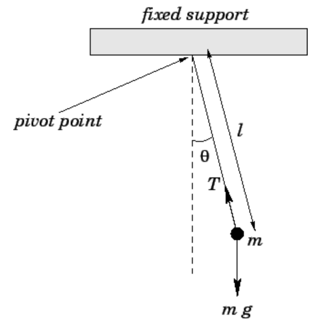So, a wavelength is the distance over which the wave shape repeats. Now that means it is the length of a sine wave from 0 to 2π.
Now if we take an example of pendulum (which we can represent In sine wave) from mean position (i.e 0 in sine graph) and it goes after time T it comes back to mean position again (2π). So the distance the Bob travelled is 4A. According to this answer it is correct :- Oscillations concept about displacement
But there is no relation as:-
λ= 4A
So why λ is not 4A, does it have to do anything with the above logic(in 2nd para) ?
End.
(Extra :- although there is a relation :-
Distance between a node and an antinode =λ/4.)


